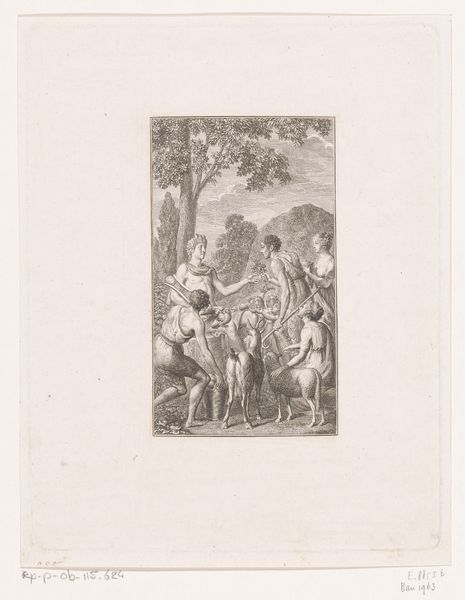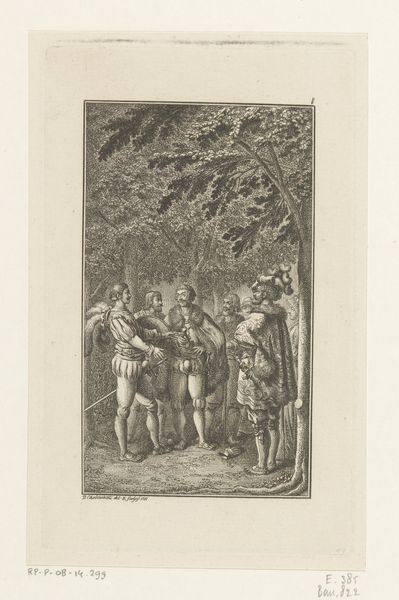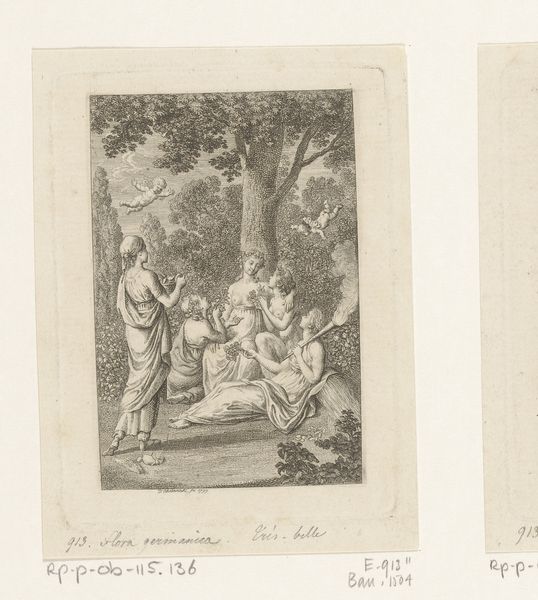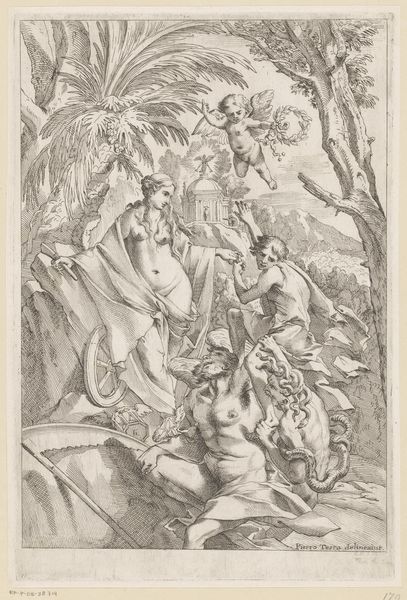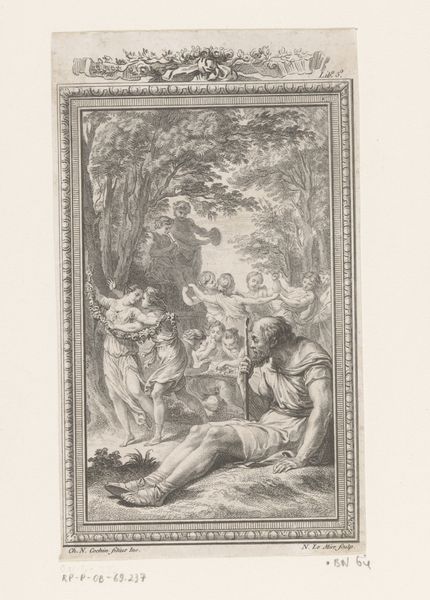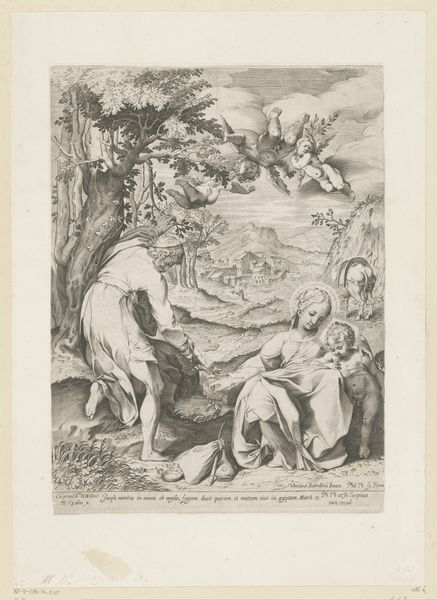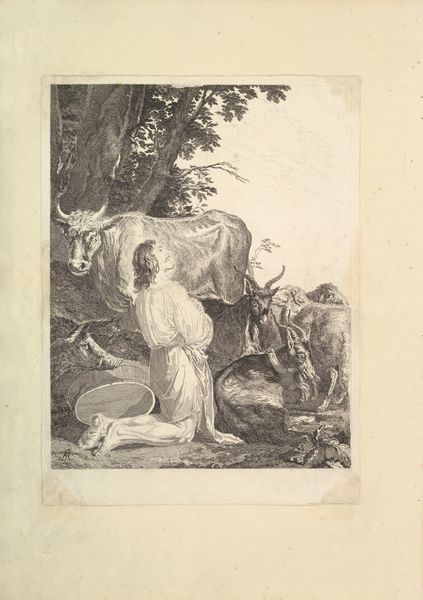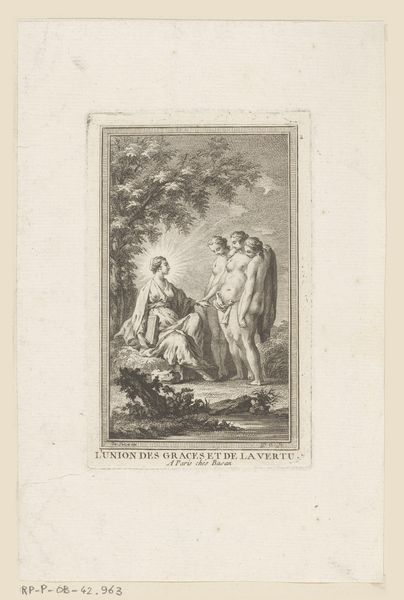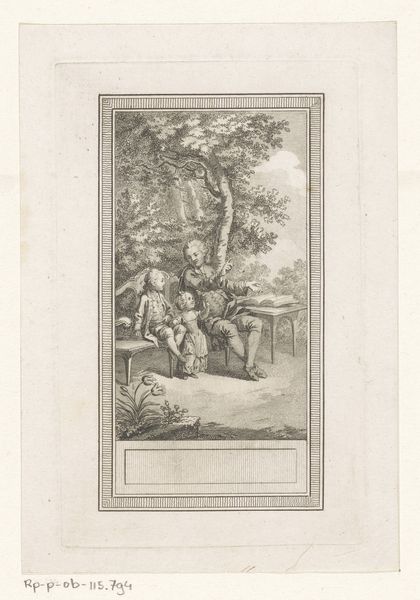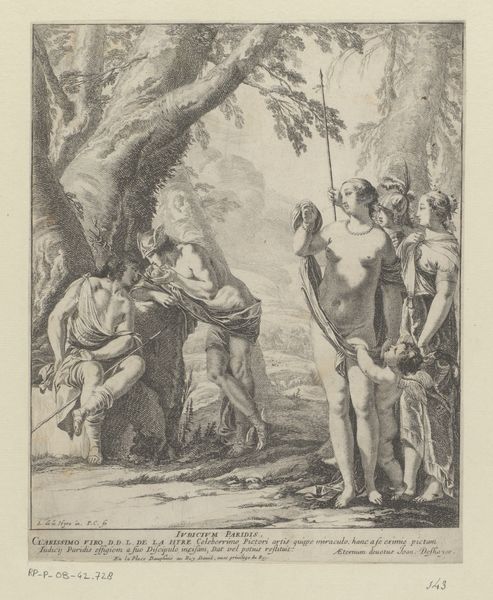
Dimensions: height 125 mm, width 75 mm
Copyright: Rijks Museum: Open Domain
Curator: What an intriguing print. Daniel Nikolaus Chodowiecki created this engraving in 1784, depicting "The Musical Contest Between Apollo and Marsyas." It's currently held in the Rijksmuseum. Editor: Right away, it hits me as almost theatrically poised. The scene is framed by trees that act as curtains, and the figures, especially Apollo, are presented with such pronounced gestures. Curator: Precisely. Chodowiecki employs line and form meticulously. Note the contrast in textures: the smooth, idealized body of Apollo juxtaposed with the rough, almost grotesque features of Marsyas, the satyr. It establishes an opposition right away, one might read the composition as Apollo and Marsyas standing as signifiers to classical structure versus untamed energy. Editor: It's the human versus the… well, more than human, isn't it? There's something rebellious and earthy about Marsyas, clutching his violin, while Apollo basks in divine, radiant light, radiating arrogance even. The details within Marsyas entourage creates this feeling that they've entered on this space to challenge a long-held musical and moral reign. Curator: Consider also the gaze—Apollo appears detached, self-assured, in direct contrast to Marsyas who seems passionate but vulnerable. Chodowiecki effectively builds a complex power dynamic solely through gesture and composition. The contest then is more than mere talent, but also divine prerogative. The print becomes a study in contrasts—light versus shadow, order versus chaos, divinity versus humanity. Editor: Looking at it this way, I get this gnawing sense that it is about human hubris… I see Marsyas trying to touch something untouchable, not just in art, but maybe existence. I guess it's what makes it captivating even if I know this contest is destined. It gives a feeling of daring, right? A story to root for, and be reminded we must have some degree of caution in ourselves. Curator: Ultimately, this small print contains an entire philosophy in a very structured presentation. It represents an understanding of the world based on binaries: beautiful and grotesque. What one has to understand in its entirety, to read an effective discourse. Editor: Indeed, and maybe sometimes its these structured, orderly confrontations that unlock that energy from something rebellious like Marsyas that brings forward conversation. It's made me rethink about the delicate interplay in structure to find innovation in anything really.
Comments
No comments
Be the first to comment and join the conversation on the ultimate creative platform.
